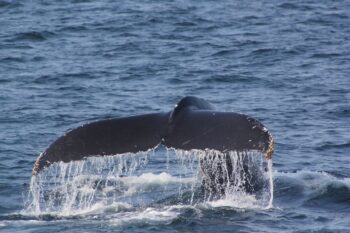
A new study shows “hotspots” where most ship collisions occur with whales in the world’s oceans and the lack of protection for the majestic giants. Global shipping traffic overlaps with about 92% of habitat ranges for blue, fin, humpback, and sperm whales, particularly the large container vessels that ferry 80% of the world’s traded goods across the oceans. Collisions are the leading cause of death worldwide for large whale species which are becoming what scientists now grimly refer to as “ocean roadkill” yet global data on ship strikes of whales are hard to come by—impeding efforts to protect vulnerable whale species.
Whales and cargo ships have always been a lethal combination – any whale unfortunate enough to be in the ships’ way usually doesn’t stand a chance. The study uncovered some new regions of potentially high risk for whale-ship collisions, including southern Africa; South America along the coasts of Brazil, Chile, Peru and Ecuador; the Azores; and East Asia off the coasts of China, Japan and South Korea.
The paper was published online in the journal Science on November 21.



